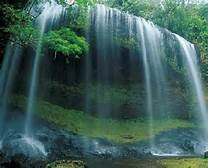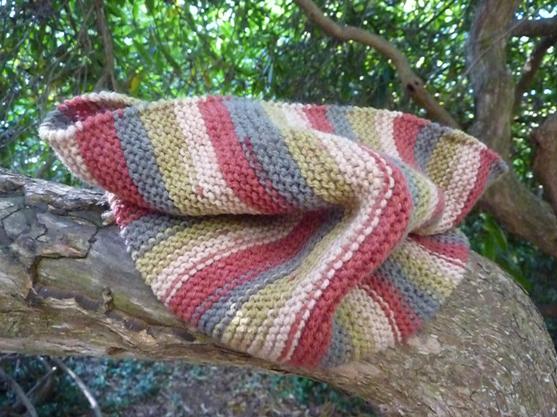
Salty Sam’s Fun Blog for Children
Number 244
Water
Hello Everyone

You will be glad to know that the building of Henry’s new attic playroom is well underway.
The Rocky Bay builders Reckitt and Stackett have been up there all week.
There was already a solid staircase up to the attic room door but they have now put in a couple of new windows into the side of the roof to let in lots of daylight.
They have put a little shower room in over the family bathroom with not only a shower but a toilet and hand basin as well.
The floor in the attic was quite solid and safe to walk on but the builders have insulated the roof space, plastered the end wall and made everything ready for decorating.
Henry is so pleased! He can’t remember the last time anything so exciting happened to him.
The new shower room had to have new plumbing but it wasn’t so difficult because there were already some water pipes that side of the house.
Did you know there were water pipes in houses two thousand years ago?
The Romans fed water into living accommodation through rolled lead pipes from springs and rivers. The habit was lost over the years that followed the collapse of the Roman Empire.
The word plumber comes from the Latin for lead – plumbum.
The rule of the Christian Church over Europe imposed a view that bathing was a vanity to be frowned on.
But the lack of sanitation that ensued because of it led to a growth in the rat and flea population. The Black Plague that was spread by the fleas that lived on black rats wiped out a huge percentage of the population.
At this time, water was taken from wells. Wine, beer and ale was drunk instead of water – even by the children. Sanitation was just open gutters in the street and drainage ditches.
But in 1460, in the City of Hull, lead pipes were laid throughout the town and people could pay to install a pump within their house.
ln 1584, Plymouth installed a new water system bringing water into the town and storing it in cisterns for people to use without charge.
ln the Victorian Era, central town pumps could be found in many towns. They were functioning for a short time each day and people carried water home from them in their own containers.
lt wasn’t usual for people to bath every day and they didn’t wash their clothes frequently either. Only household linens and underclothes were put into the weekly wash.
Rich people would have a water supply in their houses – but the pipe would only come to a tap on the ground floor and the water would be carried to other parts of the house by the servants. lf you wanted hot water, you had to heat it up in a large pot.
ln the 18oos, very large cities like London, Manchester and Liverpool began building reservoirs. And Leicester built the first sewage treatment works. Steel pipes were used to channel water.
ln 1848, the Public Health Act was passed, and this was the basis for the plumbing code that is used today. The act said that each house should have some kind of toilet for people to use and the government invested five million pounds into research and engineering works to develop a solid sewer system to improve public health.
ln the Middle Ages iron, clay and wooden pipes were used to transport water and the Victorians used lead piping. Cast iron was used at the beginning of the 20th century, but this was improved in the 1930s with the introduction of copper pipes, and they are still used today – although sometimes plastic pipes are used instead because they are cheaper.
Some old Victorian buildings still have lead water pipes and you can still see cast iron guttering and down pipes on the outside of older houses.
A lot of houses in Rocky Bay have cast iron guttering and householders paint them in order to keep them well-maintained.
l will keep you updated on the progress of Henry’s attic playroom next week.
Bye bye everyone – don’t forget to subscribe to my blog!
lf you like my blog, please support it by telling all your friends and followers about it.
Thank you!
And see you again next Fun Friday!
Love and kisses
Salty Sam

www.christina-sinclair.com


Bill and Bob’s Joke of the Week![]()
![]()
Bill: Do you know why dinosaurs have wrinkles on their knees?
Bob: Yes, it is because they always spend too long in the bath!

Salty Sam © Christina Sinclair 2015
Unauthorized use and/or duplication of material from this blog without express and written permission from this blog’s author and owner is strictly prohibited.
Links may be used to www.christina-sinclair.com

Picture Gallery
 Roman lead water pipe
Roman lead water pipe
 18th or 19th century wooden water pipe
18th or 19th century wooden water pipe
 Cast iron guttering
Cast iron guttering
 Victorian apartment block
Victorian apartment block
 A Victorian water pump
A Victorian water pump
History.powys.org.uk
 A Victorian bath
A Victorian bath
 A stopcock in a copper pipe
A stopcock in a copper pipe
– it works like a tap, opening and closing the flow of water in a pipe
 Underground pipes
Underground pipes

Large trees can only grow where there is enough water to sustain them
 Wherever a body of water is found birds will congregate
Wherever a body of water is found birds will congregate
Notice how all these seagulls are facing in the same direction
because they are all facing into the wind


 THE SALTY SAM NEWS DESK
THE SALTY SAM NEWS DESK

In Miss Pringle’s quest to improve her class’s story writing techniques, this week she tried to introduce them to some words you can use to describe how water moves.

See if you can match these words to their descriptions:-
- Drip
- Torrent
- Drizzle
- Downpour
- Trickle
- Gush
- Puddle
- Shower
- Swirl
- Mizzle
- To pour suddenly and with a lot of force
- Fine rain
- To circle around
- A mixture of mist and drizzle
- A collection of water drops in a small pool
- To fall in drops
- A fast violent flow of water
- A heavy sudden fall of rain
- A short period of rain, snow or even hail
- A thin slow run of water
 A Victorian garden fountain
A Victorian garden fountain

*********************
TO ADVERTISE ON THIS BLOG
PLEASE CONTACT:
christina.sinclair.ads@aol.co.uk
*********************


Quick Quiz
What do these idioms mean?
- Water under the bridge
- Keeping one’s head above water
- To spend money like water
- Land one in hot water
- Doesn’t hold water




lt’s the Weekend!

HOW TO MAKE A WATERFALL NECK COWL
You can make this garment in any colour, but if you make it with rainbow yarn, it will look even more interesting.
This is a really easy pattern to do but it will take a long time if you are a slow knitter. The finished garment will make a lovely accessory to a plain sweater.
The yarn used here ended up as stripes but you could end up with a misty change of colour or a scratched line effect – it just depends on how your yarn was dyed.
Slip the first stitch of every row to keep the edges neat!
NECK COWL (KNIT ONE)
Using 4mm knitting needles and dk yarn…
WOMAN’S COWL
Cast on 50 stitches
Knit in garter stitch until the work measures 70cm/26 inches
Cast off
Sew up the back seam using over-sew stitching and neaten all ends
CHILD’S COWL
Cast on 40 stitches
Knit in garter stitch until the work measures 55cm/22 inches
Cast off
Sew up the back seam using over-sew stitching and neaten all ends
*The work does not have to be exactly the length given if you aim to finish on a certain colour so that you can keep the sequence of colours even all the way around the garment.
Measure the knitting around your neck before you cast off you make sure you like the way it looks.

Please note that the material on this blog is for personal use and for use in classrooms only.
It is a copyright infringement and, therefore, illegal under international law to sell items made with these patterns.
Use of the toys and projects is at your own risk.
©Christina Sinclair Designs 2015

Answers to the News Desk Quiz
- Drip – to fall in drops
- Torrent – a fast, violent flow of water
- Drizzle – fine rain
- Downpour – a heavy, sudden fall of rain
- Trickle – a thin, slow run of water
- Gush – to pour suddenly and with a lot of force
- Puddle – a collection of water drops in a small pool
- Shower – a short period of rain, snow or even hail
- Swirl – to circle around
- Mizzle – a mixture of mist and drizzle



Quick Quiz Answers
- Water under the bridge – events in the past
- Keeping one’s head above water – managing your money – but just about
- To spend money like water – to spend money very quickly
- Land one in hot water – to get into trouble (maybe after you have done something wrong)
- Doesn’t hold water – doesn’t seem likely to be true



